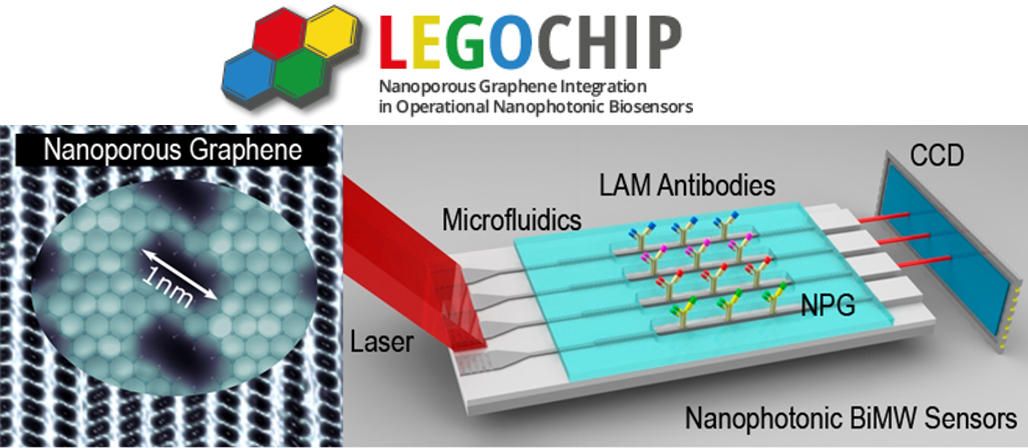Friday, 26 June 2020
LEGOCHIP project funded to develop a lab-on-a-chip sensor based on nanoporous graphene
A recently funded European FLAG-ERA project, called LEGOCHIP and led by Dr Cesar Moreno from the ICN2 Atomic Manipulation and Spectroscopy group in close collaboration with the NanoBiosensors and Bioanalytical Applications group, will integrate multifunctional nanoporous graphene into nanophotonic biosensors, in order to develop a sensor bio-functionalization protocol and design a novel lab-on-a-chip device. This second part of the project will be directed by senior researcher Dr Maria Soler.

The LEGOCHIP project -- whose name is inspired by the modular structure of nanoporous graphene (NPG), reminding LEGO bricks -- aims at tackling some important challenges in the field of portable bio-sensors for early diagnostics, using a novel approach based on multifunctional nanoporous graphene. Funded by the European Union through its FLAG-ERA 2019 call with about 360 thousand euros, the project started in March 2020 and will last for three years. It will be led by Dr Cesar Moreno, from the ICN2 Atomic Manipulation and Spectroscopy group (headed by ICREA Prof. Aitor Mugarza), and Dr Maria Soler, from the ICN2 NanoBiosensors and Bioanalytical Applications group (headed by Prof. Laura Lechuga), and will be carried out by the two groups in close collaboration.
The first purpose of LEGOCHIP is to develop a universal sensor bio-functionalization protocol. Indeed, one of the major challenges in biosensor technology development is guaranteeing a reproducible bio-functionalization of the sensing area. With currently used techniques, it is not possible to control precisely the formation of the bio-recognition interface, which severely limits the selectivity and reliability of devices. The use of functionalized NPG architectures, which will be fabricated with atomic precision, is expected to strongly improve such process. The project also aims at designing highly selective single-layer graphene membranes for advanced filtration of biological samples (blood, plasma, and serum), which is made possible by controlling the pore size in the NPG sheets.
Finally, LEGOCHIP will integrate these novel multifunctional NPG into cutting-edge photonic sensing nanotechnology (bimodal waveguide (BiMW) interferometers) to design a new lab-on-a-chip biosensor, which is expected to overcome the analogous state-of-the-art devices. In particular, operational biosensor devices will be fabricated, tested, and validated for the direct detection and label-free analysis of novel microRNA biomarkers in clinical samples, for the early diagnosis of melanoma (i.e., skin cancer) and continuous monitoring of high-risk patients. The LEGOCHIP system will be designed in a fashion suitable to became a general-purpose toolkit, which could be easily adapted and implemented to other applications, such as basic biology studies or environmental monitoring.
In order to target these relevant challenges, which have been identified as central milestones in different work packages of the European Graphene Flagship too, the LEGOCHIP project will bring together teams of researchers from various institutions. The ICN2, the University of Santiago de Campostela (Spain), the University of Bologna (Italy) and the University of Manchester (UK) will join efforts into a multidisciplinary Consortium, with the aim to merge fundamental research at the atomic scale and technology with a level of readiness over 6.

